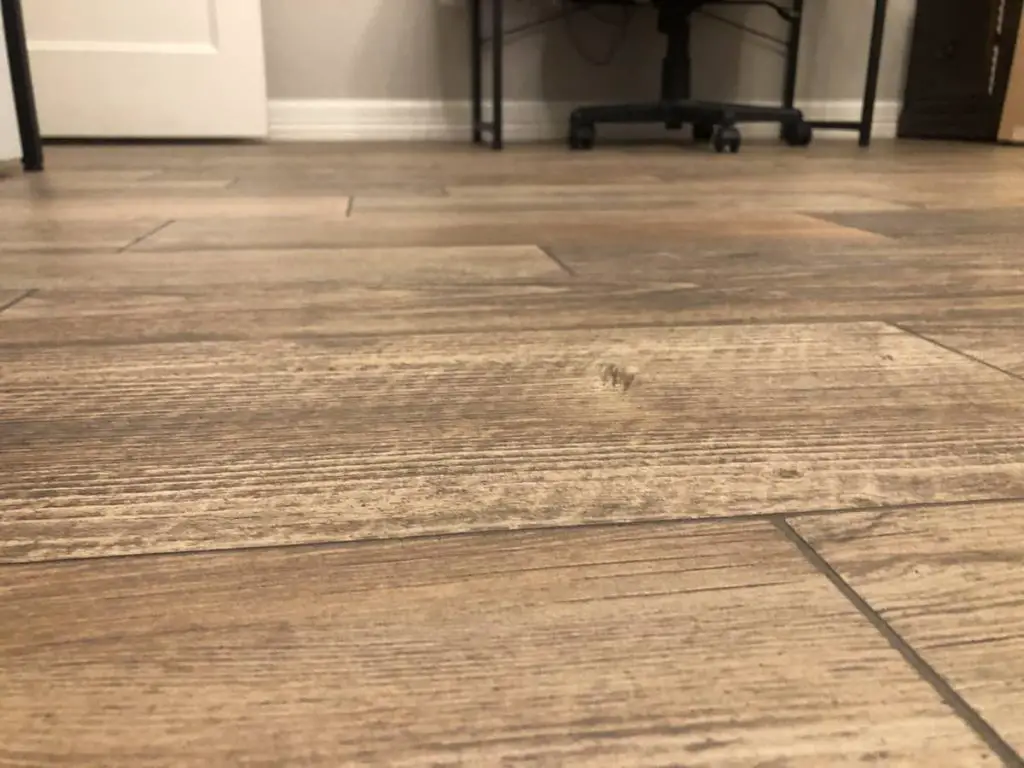Hard flooring can add a beautiful touch to any home, but even if you pick the most expensive material, a dirty floor can ruin your decor and socks! Sometimes, no matter how hard you try, your floor still looks dirty or only stays clean for a short time. Why does that happen and what can you do about it?
Your tile or laminate floors could be dirty because you may be wet-cleaning before dry-cleaning or using incorrect products for specific materials. Ceramic, granite, and vinyl require specialized products and techniques to look and stay clean. You may also be missing other preventative measures.
Keep reading to explore why your floor may seldom feel barefoot-walkable and how you could potentially keep your floors sparkling!

Why Are My Floors Still Dirty after Mopping?
When you spot dirty flooring, you may want to jump to wet cleaning immediately, but you have to sweep and vacuum the area before you do. “Dry-cleaning” will pick up loose dirt and debris that would otherwise move around with wet cleaning products.
Taking this step before grabbing your mop will also remove anything with a gritty texture that could scratch and dull the appearance of newly-cleaned floors.
For weaker tile textures like marble, stone, vinyl, and linoleum, The Spruce suggests using brushes with softer bristles to avoid scratching altogether.
Buy the Correct Cleaning Agents
Keeping tile or laminate flooring clean begins with using the best products. There are various options when picking a cleaning agent, so make sure that it is specified to clean your flooring materials. Read the label before you buy!
Note that even the right product won’t work the way you desire if misused. For tiles, you need to change mop-water frequently to prevent dirty water from being reintroduced to the floor’s surface. Moreover, avoid mops with sponge heads, as they can deposit freshly-removed dirt into the grout and ruin your cleaning process.
Laminate
The North American Laminate Flooring Association advises using “barely damp” mops when cleaning laminate flooring. Because extended exposure to moisture can seep through the laminate layers, molding and bacteria can grow beneath the floor’s surface. Over time, this will cause irreparable damage.
Though laminate can give the appearance of hardwood, no polish is necessary and can diminish the appearance of your floors.
Instead of preserving that nice, clean sheen, finishes will build up over time, creating a milky or dull outer layer. If left for too long, this build-up can be so fiercely embedded it requires sanding for removal (source).
Tile
When choosing the right product for tile, choose a floor cleaner designed specifically for your type of tile. Do you have marble or stone? Linoleum or vinyl? All of these require specific practices and products to achieve that spotless shine.
Sanitize Your Mop Head
Did you know that most mop heads are removable and can be machine-washed? Sanitizing your mop-head will not only release just-absorbed grime but will also get rid of harmful bacteria you can’t even see!
Don’t Walk on Wet Floors
To escape the tragedy of a brown footprint on a fresh clean:
- Be strategic when wet-cleaning.
- Schedule this at a time when you know the cleaner has time to dry, and no one will be drudging through your hard work.
- Before you get to scrubbing, plan a route to follow while cleaning, so you don’t end up cornered.
Structuring cleaning time and procedure will save you a lot of time and energy and keep your floors nice and shiny.
Cover the Right Areas
Though choosing the best products is crucial, don’t miss hard-to-reach areas where dust and debris accumulate. Look for corners, edges, and objects where dirt can collect during the dry-cleaning stage (sweeping or vacuuming).
Clean the Grout
If your grout isn’t a part of your cleaning routine, start adding it to the list! Microscopic holes in grout collect dirt over time. Not to mention, grout itself creates small dips between tiles as a perfect ditch for crud deposits.
So, how do you clean your grout? Buy products made for grout and to stick with alkaline over other acidic cleaners or anything with oil and wax. Oil and wax can create a dirty film, while acid can eat away at the grout itself (source).
It is also a good idea to vacuum the remnants after applying cleaning products for an easy and efficient clean.
Buy a Doormat
A preventative measure that you can take is purchasing a doormat. When you’re out of the home, the bottom of your shoes are exposed to filthy surfaces on the ground, thus tracking a host of dirt and bacteria straight into your home.
Angi.com dubs the doormat “tile’s first line of defense against dirt” because incoming traffickers can wipe away excess debris before it sticks to your floor.
Clean Every One to Two Weeks
If you haven’t scrubbed your floor in over 14 days, you are overdue. After consulting experts in microbiology and cleaning, NBC News reported a frequency of one or two weeks needed for tile and laminate (source). The notable exception is kitchen floors, which require slightly more upkeep.
Deep Clean at Least Once a Month
Every so often, it’s a good idea to give your flooring some extra attention and deep-clean. According to Martha Stewart, monthly, extensive washing maintains a beautiful look to floors (source). Using hot water, get up-close and personal with a brush or mop head and scalding water, soak and scrub.
Remember to be cautious with laminate flooring. Avoid jeopardizing your laminate’s integrity and stay away from using too much liquid for too long on its surface.
Final Thoughts
Though not always easy, you can reduce your time cleaning and get your floor to shine by refining your processes, purchases, and preventative measures. Be aware of what your floors require and how you can maximize the efficiency of your routine. Depending on your lifestyle and how many feet (or paws) meet your laminate or tile, it can be hard to maintain presentable floors, but not impossible!
Recommended Reading:
Best Cordless Vacuum For Hardwood Floors
How To Clean And Sanitize Hardwood Floors With White Vinegar And Water
Declutter your home once and for all (Even if you have no time and don't know where to begin)! Learn More.

